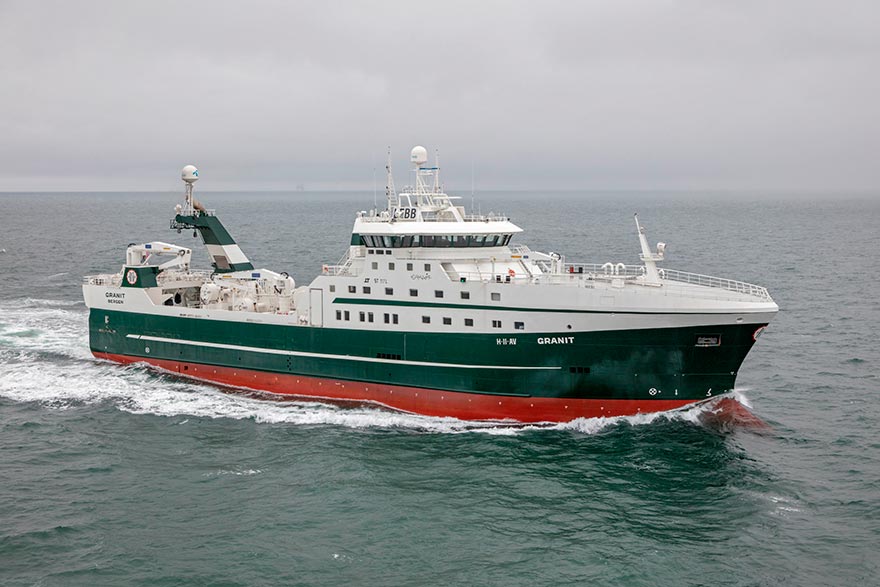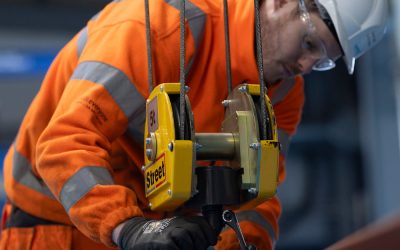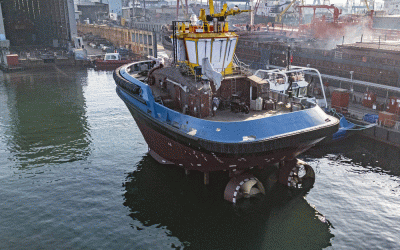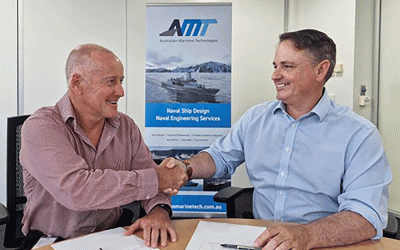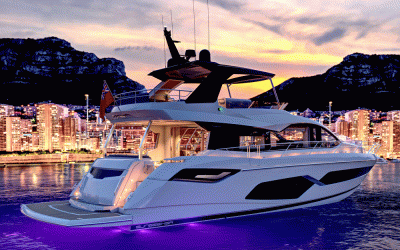What a difference a year can make. In Ship & Boat International January/February 2022 (pages 28-30), we looked at nuclear power and its potentially game-changing contribution to clean marine propulsion. Back then, we wrote: “It would be unwise to write off nuclear power, given the uphill struggle the industry faces in meeting IMO’s emissions targets in time.”
One major obstacle, though, is the fact that “there are regulators, insurance companies and global port authorities to convince, let alone the general public, and this isn’t going to happen overnight,” we wrote back then. The nuclear industry has an enviable safety record compared to many other energy sectors, but old prejudices die hard, and a significant number of people remain deeply concerned by the thought of nuclear reactors near their homes – let alone below deck, metres beneath their feet,
And yet, perceptions seem to be changing – gradually so, perhaps, but there’s definitely something in the air. The current energy crisis appears to be to 2022 what COVID-19 was to 2020: a cause of disruptive upheaval that’s forcing governments and industry to re-evaluate the current system and to consider new strategies and perspectives. With Pakistan and Lebanon already bearing the brunt of rolling blackouts, and the UK and Europe facing an uncomfortable winter (partly thanks to a certain conflict), people are becoming increasingly desperate for an affordable fix, with some wondering: weren’t the wind turbines supposed to save us from this?
It’s no secret that nuclear power has been harnessed by various international navies since the 1950s. Within the confines of the naval/military sector, nuclear power is largely accepted and seldom reported on, generating little controversy. However, transfer this technology to the commercial vessel segment, even theoretically, and suddenly it becomes incredibly problematic. Or at least that was the case until recently: 2022 has been notable in that a few maritime players seem be warming to the concept.
In August, for example, class society ABS announced that it had been contracted by the US Department of Energy to research the viability of nuclear propulsion aboard commercial vessels. This was followed by Dutch ship designer C-Job Naval Architects announcing the findings of research that it had commissioned on the subject. TU Delft graduate Koen Houtkoop, who undertook this work on behalf of C-Job, reported: “Compared to conventional fuel-based systems, my research showed that [with nuclear power] there can be up to a 98% reduction in CO2 emissions, [while] SOx, PM and NOx, are eliminated completely.” However, his research concluded, large, oceangoing vessels – such as bulkers, containerships, tankers and offshore SOVs – are currently better suited to nuclear propulsion than are vessels in the sub-100m fleet.
Does this mean that nuclear power is out of reach for small-to-medium-sized vessels? Not at all, argues Robert McDonald, principal engineer at the Institute for Energy Technology (IFE) in Norway – one of the partners in the newly formed Nuclear Energy for Maritime Operations (NEMO) project, whose plans include the development of a nuclear-powered, 70m shrimp trawler, fuelled by compact ‘microreactors’.
“Since January 2022, we’ve seen a real shift in attitudes towards nuclear power,” McDonald tells Ship & Boat International. He also draws attention to developments in Sweden, which utilised 10 nuclear reactors in the past. Although this number is now down to six, the country’s incoming government has pledged a pro-nuclear stance. Even Germany, which previously committed to closing down all of its nuclear plants, has decided to hang onto two of them – for the coming winter period, at least. “There’s an awareness that we can’t rely solely on oil and gas resources,” McDonald says.
While many of the more common (and popular) ‘alt-fuels’ deliver, their success depends on their application – the vessel type, its operational profile and its area of deployment. There is simply no ‘instant fix’ that applies to all vessels; what works for a short-hop airport ferry may leave an offshore supply vessel stranded. For example, McDonald recalls: “We’ve looked at the feasibility of using hydrogen and/or ammonia as a marine fuel. Storage is still a problem: hydrogen takes up six times the space of a diesel tank arrangement, and methanol three times as much. There is also the question of how you get the hydrogen or methanol onto the ship.”
As Ship & Boat International discussed in the January/February 2022 issue article, the most commonly used element for nuclear fuel is Uranium, and particularly the isotope U-235: Uranium ore is easy to mine, and can be enriched to high levels. It also has a well-established supply chain, dating back to its widescale production for military purposes in the 1950s and 1960s.
When it comes to maritime usage, nuclear power advocates are particularly excited about the potential of Thorium – an abundant and naturally occurring metal that can be found anywhere there is sunshine. Thorium is especially attractive as its by-products are safer than Uranium: it doesn’t produce Plutonium 239 (the isotope used in the production of nuclear weapons) when fission occurs, for instance. Thorium would be stored and put to work in a molten salt reactor (MSR). “This dissoves the Thorium into liquid salt, causing a chain reaction that produces steam to drive a turbine, creating huge amounts of clean electricity,” McDonald explains. Once installed aboard a vessel, the MSR does not need to be refuelled: one simply removes the salt from the reactor every three to seven years.
There are drawbacks, though: “The Thorium supply chain isn’t quite up-and-running yet,” says McDonald. There’s also the fact that most available MSRs are better suited to vessels over the 100m loa mark. Earlier this year, Ulstein introduced its Ulstein THOR concept, a 149m, MSR-powered vessel that could be used to recharge the batteries aboard passing ferries, cruise ships and research vessels – but, in the main, this technology is still too big for the average 50-100m vessel. Even small modular reactors (SMRs), typically rated 100-300MWe, tend to be too big for smaller craft.
The answer for these vessel types, then, may be Uranium-fuelled microreactors. These are smaller, portable reactors, typically rated 10MWe or less (and sometimes up to 1,000th the size of a full-scale nuclear reactor) that can be added to the electric grid, operated independently from the electric grid, or even used in tandem to create a ‘micro-grid’ – making them a practical solution for crisis response in areas affected by power cuts and blackouts, or for military operations in remote locations. They can also provide additional heat for industrial applications such as “district heating, desalination, hydrogen production and general electricity generation”, McDonald says.
It is this microreactor technology that the NEMO project partners plan to deploy aboard the 70m shrimp trawler. Alongside IFE, the project has attracted naval architect Skipsteknisk, fishery Stella Polaris and shipowner Halstensen Granit (all based in Norway). McDonald says: “Norway has introduced ‘eco-labels’ for food and products that have been sourced ethically and in a sustainable way. Stella Polaris was doing well on this score, but calculated that 93% of its CO2 emissions are coming from its trawler operations.”
The NEMO partners hope to supply the trawler with a microreactor, most likely inside a container measuring 12m x 4m x 4m and weighing approximately 140tonnes. Halstensen Granit will supply an existing shrimper, the 81m Granit (pictured above), for feasibility tests before Skipsteknisk pens the plans for the forthcoming newbuild. The partners will check whether existing vessel components require modification to cope with the reactor’s thermal output – a situation that might necessitate the installation of evaporators or additional turbines. And, naturally, the vessel’s safety profile (especially how it performs in various wave and weather conditions) and human error factors will come under intense scrutiny.
